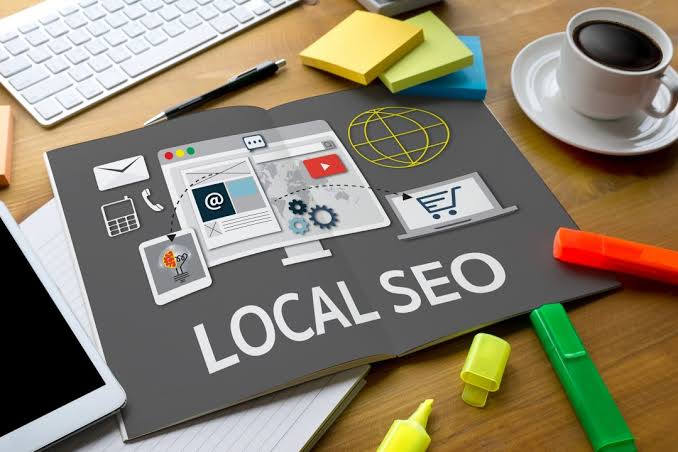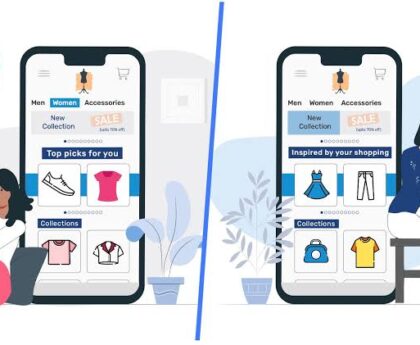
Want to attract more local customers and boost foot traffic? Local search optimisation is the secret weapon businesses need to dominate their neighbourhood market.
With most consumers relying on search engines to find nearby services, ensuring your business appears at the top of local searches is critical. This blog dives deep into the best local search optimisation strategies, from Google My Business (GMB) enhancements to hyperlocal keyword targeting.
Whether you own a boutique, restaurant, or service-based business, optimising for local search can skyrocket your visibility and revenue. Learn how to optimise your website, leverage customer reviews, and use location-specific content to attract the right audience.
By the end of this guide, you’ll have actionable steps to improve your local search optimisation and outrank competitors.
Ready to become the go-to business in your area? Read on!
Table of Contents
- Why Local Search Optimisation Matters
- Google My Business: The Powerhouse of Local Search Optimisation
- Optimising Website for Local Search Optimisation
- Leveraging Customer Reviews & Ratings
- Hyperlocal Keyword Strategy
- Conclusion: Take Action on Local Search Optimisation
Why Local Search Optimisation Matters

Did you know that 46% of all Google searches are looking for local information? If your business isn’t optimised for local search optimisation, you’re missing out on a massive customer base.
Consumers today use search engines to find nearby businesses, read reviews, and compare services before making a decision. Whether someone is searching for a “bakery near me” or “best salon in [your city],” your goal is to appear at the top of those results. That’s where effective local search optimisation comes in.
By implementing the right strategies, you can:
- Increase visibility in Google’s local pack
- Drive foot traffic to your physical store
- Boost website clicks and calls from potential customers
- Outrank competitors who are not optimised for local searches
Let’s explore the key strategies to achieve this.
Google My Business: The Powerhouse Of Local Search Optimisation
Your Google My Business (GMB) listing is your most powerful tool for local search optimisation. When optimised correctly, it ensures your business appears in Google Maps, local search results, and “near me” searches.
How to Optimise Your GMB Profile:
✔ Claim & verify your business on Google My Business.
✔ Complete your profile with accurate name, address, phone number (NAP), and business hours.
✔ Add high-quality images showcasing your products, services, or storefront.
✔ Select the right business categories to improve relevance.
✔ Encourage customer reviews and respond to them actively.
✔ Post regular updates & offers to engage potential customers.
A well-optimised GMB profile can significantly increase your chances of appearing in the local 3-pack, driving more calls, visits, and leads.
Optimising Website For Local Search Optimisation
Your website plays a crucial role in local search optimisation. Here’s how to optimise it effectively:
1. Implement Location-Specific Pages
If your business serves multiple locations, create dedicated pages for each area with unique content, local keywords, and testimonials.
2. Optimise Meta Tags & Headers
Use location-based keywords in your:
- Title tags & meta descriptions (e.g., “Best Digital Marketing Agency in [City]”)
- H1 & H2 headers to reinforce local relevance
3. Add an Embedded Google Map
Place a Google Map of your business location on your Contact page to help Google and customers find you easily.
4. Improve Mobile Responsiveness
Most local searches happen on mobile devices. Ensure your website loads fast, is mobile-friendly, and has click-to-call buttons.
Leveraging Customer Reviews & Ratings
Customer reviews are a game-changer in local search optimisation. Google and potential customers trust businesses with higher ratings and consistent positive feedback.
How to Get More Reviews:
✔ Politely ask satisfied customers to leave a review on Google.
✔ Offer a small incentive (discounts, loyalty points) for genuine feedback.
✔ Make leaving a review easy with QR codes or direct links.
✔ Respond to all reviews, positive or negative, to build trust.
Pro Tip: Include location-based keywords in your review responses to improve local SEO rankings!
Hyperlocal Keyword Strategy
Using hyperlocal keywords can help Google connect your business to specific areas, neighborhoods, or landmarks.
How to Use Hyperlocal Keywords Effectively:
✔ Include city and neighborhood names in your content (e.g., “Best Makeup Artist in Andheri, Mumbai”).
✔ Use long-tail keywords like “affordable home cleaning services in Brooklyn.”
✔ Optimise blog content, FAQs, and testimonials with local phrases.
Example of Hyperlocal Content:
❌ Generic: “Best Italian Restaurant”
✅ Optimized: “Best Italian Restaurant in Downtown Chicago – Authentic Pasta & Pizza”
By strategically using hyperlocal keywords, your business will appear in the right searches and attract customers actively looking for your services.
Conclusion: Take Action On Local Search Optimisation
Local search optimisation is no longer optional—it’s a necessity for businesses wanting to dominate their neighbourhood market. By optimising your Google My Business profile, website, customer reviews, and hyperlocal keywords, you’ll enhance your visibility and attract more local customers.
What to Do Next?
✅ Claim & optimise your Google My Business listing.
✅ Update your website with location-based content.
✅ Encourage more reviews and engage with customers.
✅ Use hyperlocal keywords to rank higher in searches.
The competition is fierce, but with the right local search optimisation strategies, you can outrank competitors, increase traffic, and grow your revenue. Ready to get started? Start optimising today and watch your business thrive!





